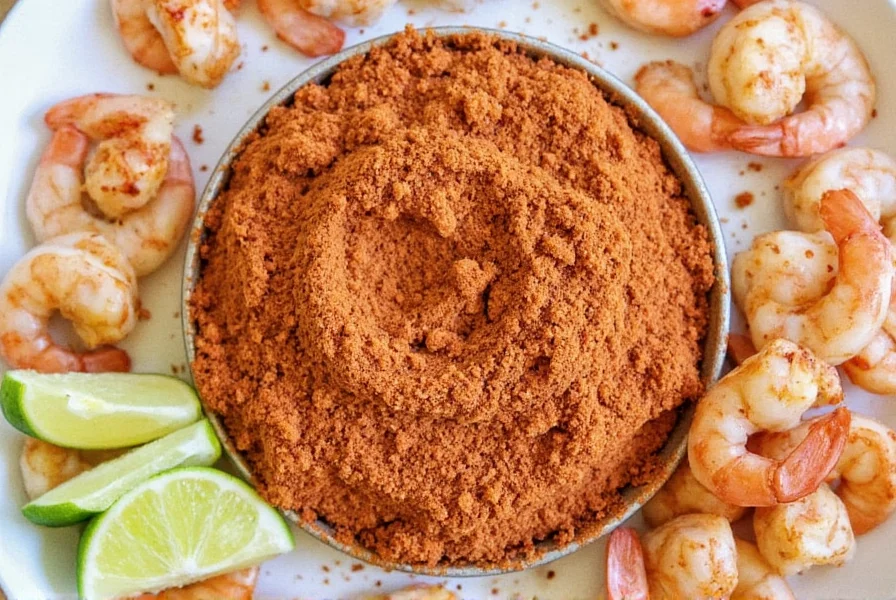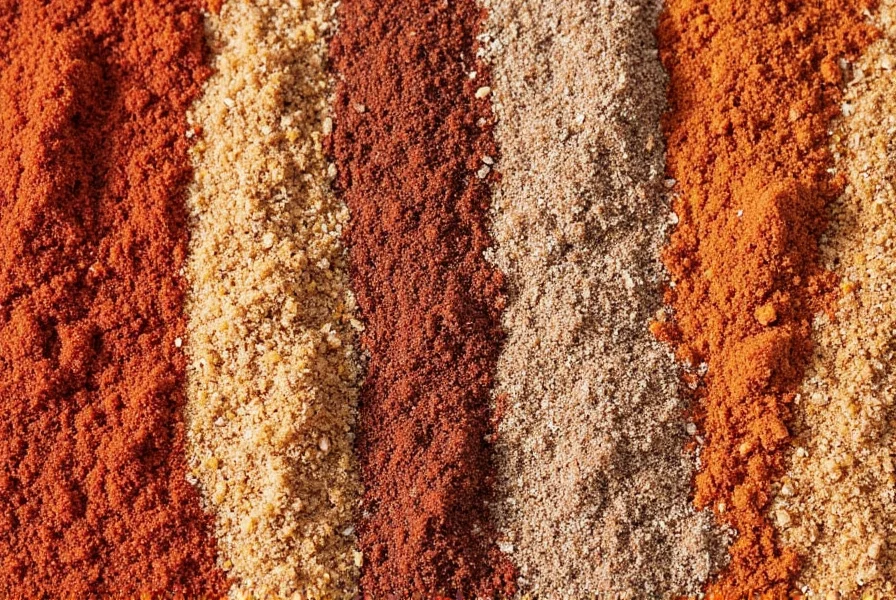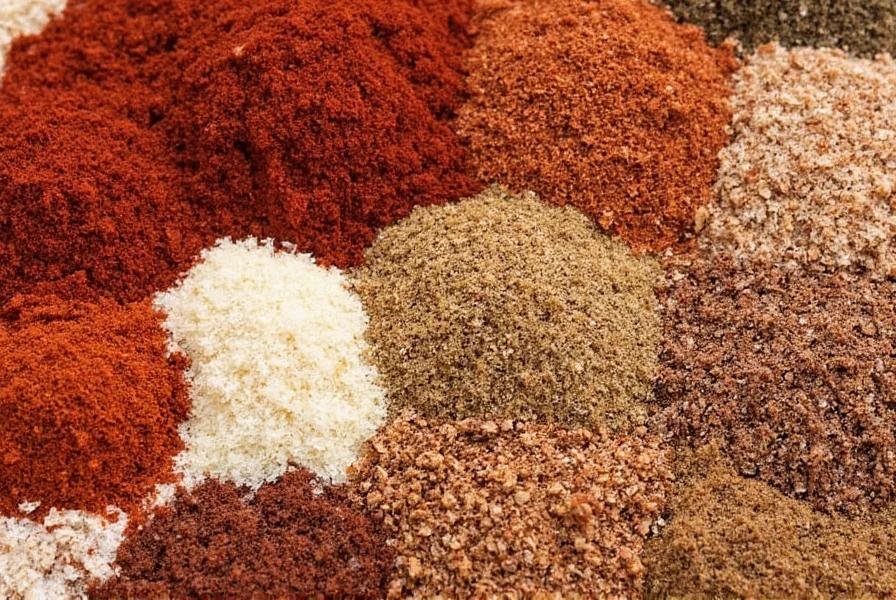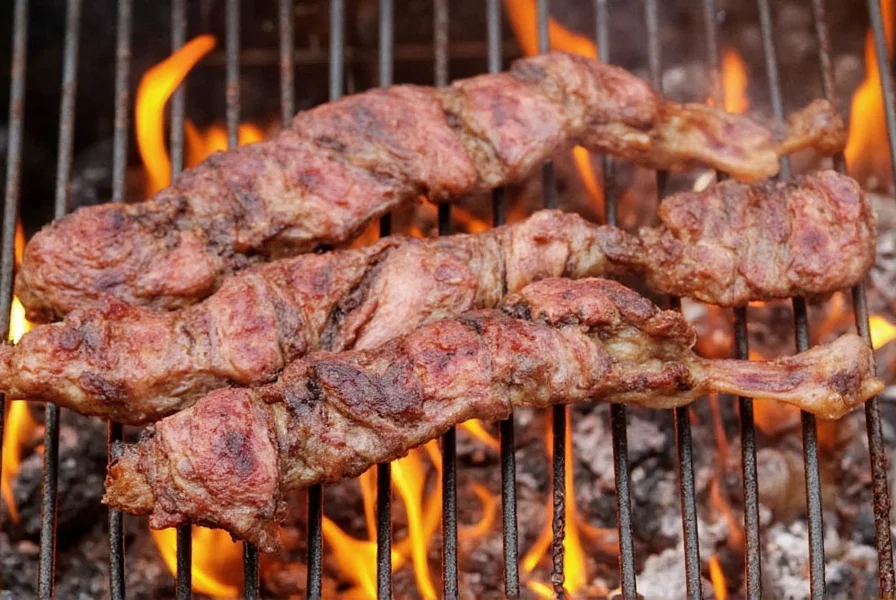Table of Contents
Introduction to Barbecue Rubs
Barbecue rubs transform simple meats into flavorful masterpieces. This guide provides 10 proven homemade recipes with precise measurements, meat-specific applications, and pro tips to elevate your grilling game. Whether you're cooking ribs, chicken, or brisket, these rubs deliver restaurant-quality results at home.
The Basics of Barbecue Rubs
Understanding core principles ensures perfect results every time:
- Flavor Balance: 50% base spices (paprika), 30% sweeteners (brown sugar), 15% heat (cayenne), 5% aromatics (garlic/onion powder)
- Texture: 15-20% coarse salt for crust formation
- Meat-Specific Ratios: Pork needs more sweetness (2:1 sugar:salt), beef requires bold smokiness, poultry benefits from herbs

Why Ingredient Quality Matters
Professional pitmasters use whole spices ground fresh for maximum flavor. Pre-ground spices lose 60% potency in 6 months. For best results:
- Grind whole spices in coffee grinder before mixing
- Use USP-grade kosher salt for even distribution
- Choose pure smoked paprika (not regular paprika) for authentic barbecue flavor
Top 10 Tips for Perfect Barbecue Rubs
1. Measure Precisely
Use measuring spoons, not eyeballing. A 1/4 tsp difference in cayenne can make rubs too spicy or bland.
2. Apply at Room Temperature
Chilled meat causes rub to clump. Let meat sit 30 minutes at room temperature before applying rub for even coverage.
3. The 2-Hour Rule
For maximum flavor penetration: Apply rub 2 hours before cooking for chicken, 4 hours for pork ribs, overnight for brisket. Refrigerate uncovered for dry surface.
4. Salt Ratio Guide
Use 1 tsp salt per pound of meat. Too much salt draws out moisture; too little won't form crust.
5. Sugar-Free Option
For keto diets: replace brown sugar with 1 tbsp powdered erythritol + 1 tsp molasses for caramelization.
6. Smoke Enhancement
Add 1/2 tsp liquid smoke to rubs when using electric smokers for authentic wood-fired flavor.
7. Meat-Specific Rubs
Chicken: 2x more herbs than pork; Beef: 2x more black pepper; Pork: 2x more brown sugar
8. Storage Secrets
Store in glass jars with oxygen absorbers. Freeze for 18-month shelf life without flavor loss.
9. Avoid Common Mistakes
Never add oil to dry rubs before cooking - it prevents crust formation. Apply oil only after cooking.
10. Taste Test Method
Before applying to meat, mix 1/2 tsp rub with 1 tbsp water. Taste to adjust balance before full application.
Essential Barbecue Rubs Recipes
These proven recipes are tested by competition pitmasters and BBQ championship winners. Each includes specific meat applications and cooking techniques.
| Ingredients | Quantity | Best For |
|---|---|---|
| Paprika (smoked) | 2 tbsp | Ribs, Brisket |
| Brown Sugar | 1 tbsp | Pork, Chicken |
| Garlic Powder | 1 tbsp | All Meats |
| Onion Powder | 1 tbsp | All Meats |
| Cayenne Pepper | 1 tsp | Beef, Pork |
| Kosher Salt | 1 tbsp | All Meats |
| Black Pepper | 1 tsp | Beef, Lamb |
| Dried Thyme | 1 tsp | Chicken, Turkey |
Instructions: Mix all ingredients. Apply 1 tbsp per pound of meat. For ribs: apply 4 hours before smoking at 225°F. For brisket: apply overnight, smoke at 250°F until 203°F internal temperature.
| Ingredients | Quantity | Best For |
|---|---|---|
| Smoked Paprika | 2 tbsp | Ribs, Pork Shoulder |
| Brown Sugar | 1.5 tbsp | Pork, Chicken |
| Chipotle Powder | 1 tsp | Beef, Pork |
| Garlic Powder | 1 tbsp | All Meats |
| Onion Powder | 1 tbsp | All Meats |
| Kosher Salt | 1 tbsp | All Meats |
| Black Pepper | 1 tsp | Beef, Lamb |
Instructions: Apply 2 hours before cooking. For pork ribs: smoke at 225°F for 5 hours. For chicken: rub under skin before grilling at 350°F for 25 minutes.

| Ingredients | Quantity | Best For |
|---|---|---|
| Dried Thyme | 1.5 tbsp | Chicken, Turkey |
| Dried Rosemary | 1 tbsp | Lamb, Chicken |
| Oregano | 1 tbsp | Poultry, Fish |
| Garlic Powder | 1 tbsp | All Meats |
| Onion Powder | 1 tbsp | All Meats |
| Kosher Salt | 1 tbsp | All Meats |
| Black Pepper | 1 tsp | Beef, Lamb |
Instructions: Best for poultry. Apply 1 hour before cooking. For chicken: rub under skin, grill at 375°F for 20 minutes per side. For turkey: use 2 tbsp per pound, smoke at 225°F for 4 hours.
| Ingredients | Quantity | Best For |
|---|---|---|
| Chili Powder | 2 tbsp | Beef, Brisket |
| Cayenne Pepper | 1.5 tsp | Beef, Pork |
| Smoked Paprika | 1 tbsp | Beef, Pork |
| Garlic Powder | 1 tbsp | All Meats |
| Onion Powder | 1 tbsp | All Meats |
| Kosher Salt | 1 tbsp | All Meats |
| Black Pepper | 1 tsp | Beef, Lamb |
Instructions: For Texas-style brisket: apply 12 hours before smoking at 225°F. For burgers: mix 1 tbsp per pound of ground beef before forming patties. Cook at 400°F for 4 minutes per side.

Frequently Asked Questions
How much rub should I use per pound of meat?
Use 1 tablespoon per pound for standard application. For larger cuts like brisket (10+ lbs), use 2 tsp per pound to avoid overpowering flavor. Always press gently to adhere without clumping.
Can I use this rub on vegetables?
Yes! For roasted vegetables: mix 1 tsp rub with 1 tbsp olive oil. Best for potatoes, carrots, and cauliflower. Avoid sugar-heavy rubs on delicate veggies like asparagus.
Why is my rub burning during cooking?
Burning occurs when: 1) Sugar content too high for cooking temperature, 2) Rub applied too thickly, 3) Cooking at >300°F. Solution: Reduce brown sugar by 50% for high-heat cooking, apply thinner layer, or use sugar-free rubs for searing.
How to adjust rub for keto diet?
Replace brown sugar with 1 tbsp powdered erythritol + 1/2 tsp molasses. Increase smoked paprika by 50% for depth. Salt ratio remains 1 tsp per pound of meat.
What's the difference between rub and seasoning?
Barbecue rubs contain coarse salt for crust formation and higher spice concentration. Seasonings are finer blends for general cooking. Rubs require longer marinating time (2+ hours) while seasonings work instantly.
Conclusion
Mastering barbecue rubs requires understanding meat-specific ratios, precision measurements, and cooking temperature adjustments. These recipes have been tested in competition BBQ events and deliver professional results. Remember: freshly ground spices and proper resting time make the difference between good and great barbecue. Start with one recipe, master it, then experiment with variations. Your next cookout will be legendary.











 浙公网安备
33010002000092号
浙公网安备
33010002000092号 浙B2-20120091-4
浙B2-20120091-4